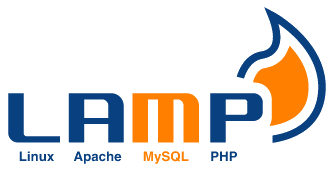
In this tutorial, we will show you how to install LAMP (Linux Apache, MariaDB, PHP) on CentOS 7. For those of you who didn’t know, LAMP which originally stands for Linux, Apache, MySQL, and PHP has now recently changed with the rise of MariaDB, a drop-in replacement for original MySQL. We will be using Apache for our web server and PHP for our scripting language. All components are free and open-source software, and the combination is suitable for building dynamic web pages.
This article assumes you have at least basic knowledge of Linux, know how to use the shell, and most importantly, you host your site on your own VPS. The installation is quite simple. I will show you the step-by-step installation of LAMP (Linux Apache, MariaDB, and PHP) on CentOS 7.
Prerequisites
- A server running one of the following operating systems: CentOS 7.
- It’s recommended that you use a fresh OS install to prevent any potential issues.
- SSH access to the server (or just open Terminal if you’re on a desktop).
- A
non-root sudo useror access to theroot user. We recommend acting as anon-root sudo user, however, as you can harm your system if you’re not careful when acting as the root.
Install LAMP (Linux Apache, MariaDB, PHP) on CentOS 7
Step 1. First of all, make sure that all packages are up to date.
yum -y update
Step 2. Installing Apache on CentOS 7.
We will be installing Apache with yum, which is the default package manager for CentOS 7:
yum install httpd openssl mod_ssl
Restart Apache and add it to automatically start on your system start-up using:
systemctl restart httpd systemctl status httpd systemctl enable httpd
You can verify that Apache is really running by opening your favorite web browser and entering the URL http://your-server's-address. you should get a “Testing 123″ page similar to the image below:
Step 3. Installing MariaDB on CentOS 7.
MariaDB is a drop-in replacement for MySQL. It is a robust, scalable, and reliable SQL server that comes with a rich set of enhancements. We will also be using yum to install MariaDB:
yum install mariadb mariadb-server mysql
By default, MariaDB is not hardened. You can secure MariaDB using the mysql_secure_installation script. you should read and below each step carefully which will set a root password, remove anonymous users, disallow remote root login, and remove the test database and access to secure MySQL:
mysql_secure_installation
To log into MariaDB, use the following command (note that it’s the same command you would use to log into a MySQL database):
mysql -u root -p
Restart the MariaDB database server and enable it to start on system start-up using:
systemctl restart mariadb systemctl status mariadb systemctl enable mariadb
Step 4. Installing PHP on CentOS 7.
Finally, run the commands below to install PHP along with other good-to-have modules:
yum install php php-mysql
You may want to install some other PHP extensions required by your applications. Here is the list:
php-bcmath : A module for PHP applications for using the bcmath library php-cli : Command-line interface for PHP php-common : Common files for PHP php-dba : A database abstraction layer module for PHP applications php-devel : Files needed for building PHP extensions php-embedded : PHP library for embedding in applications php-enchant : Enchant spelling extension for PHP applications php-fpm : PHP FastCGI Process Manager php-gd : A module for PHP applications for using the gd graphics library php-intl : Internationalization extension for PHP applications php-ldap : A module for PHP applications that use LDAP php-mbstring : A module for PHP applications which need multi-byte string handling php-mysql : A module for PHP applications that use MySQL databases php-mysqlnd : A module for PHP applications that use MySQL databases php-odbc : A module for PHP applications that use ODBC databases php-pdo : A database access abstraction module for PHP applications php-pear.noarch : PHP Extension and Application Repository framework php-pecl-memcache : Extension to work with the Memcached caching daemon php-pgsql : A PostgreSQL database module for PHP php-process : Modules for PHP script using system process interfaces php-pspell : A module for PHP applications for using pspell interfaces php-recode : A module for PHP applications for using the recode library php-snmp : A module for PHP applications that query SNMP-managed devices php-soap : A module for PHP applications that use the SOAP protocol php-xml : A module for PHP applications which use XML php-xmlrpc : A module for PHP applications which use the XML-RPC protocol
Restart Apache using systemctl for the changes to take effect:
systemctl restart httpd systemctl status httpd
To test PHP, create a test file named info.php with the content below. Save the file, then browse to it to see if PHP is working:
nano /var/www/html/info.php
<?php phpinfo(); ?>
Step 5. Configure firewall on CentOS 7.
Because everything is blocked by default on CentOS 7, you must enable HTTP/HTTPS traffic through the firewall. To enable web traffic, run the commands below:
sudo firewall-cmd --permanent --zone=public --add-service=http sudo firewall-cmd --permanent --zone=public --add-service=https sudo firewall-cmd --reload
Congratulations! You have successfully installed LAMP. Thanks for using this tutorial for installing LAMP (Apache, MariaDB, and PHP) on CentOS 7 system. For additional help or useful information, we recommend you to check the official Apache, MariaDB, and PHP website.